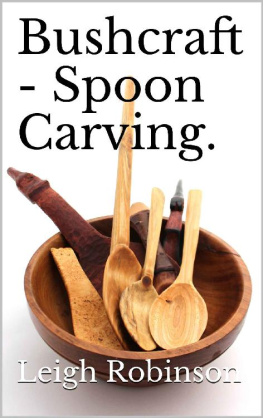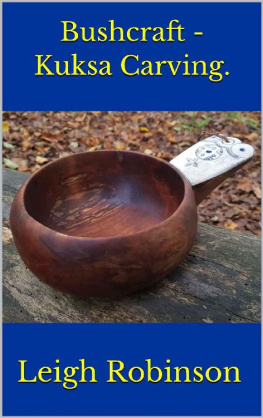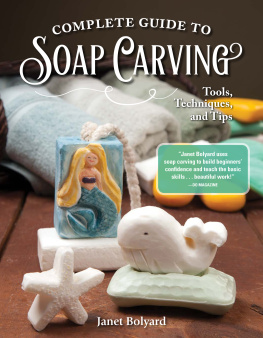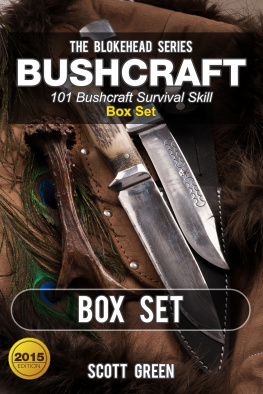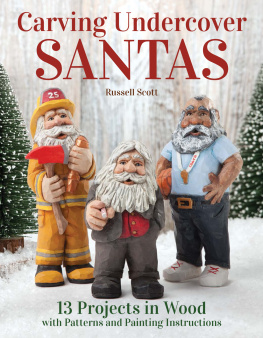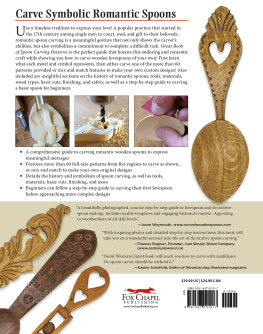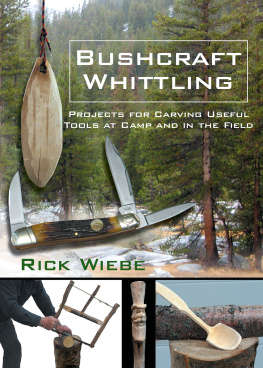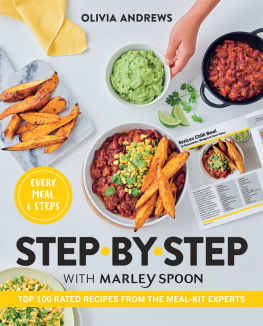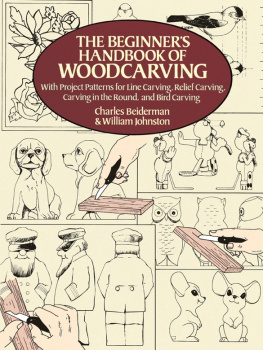Leigh Robinson
Bushcraft
Spoon Carving.
Dedication
To Kerrie, for enduring sawdust and shavings throughout the home for too long.
Acknowledgements
To my friends and other spoon carvers who sparked my interest in green woodworking and spoon carving.
A request
Please can you submit a customer review on Amazon or any other channel you bought the book. Reviews help encourage others to see that spoon carving isnt impossible, its fun and everyone can do it.
Other books by Leigh Robinson



Leigh Robinson
Bushcraft
Spoon Carving.
First Published 2019 by Kindle Direct Publishing.
Copyright Text and photography Leigh Robinson 2019
All rights reserved. No part of this publication may be reproduced, stored in a retrieval system, or transmitted in any form or by any means, electronic, mechanical, photocopying, recording or otherwise, without prior permission from the copyright owners.
ISBN: 9781071215579
The right of Leigh Robinson to be identified as the author of this work has been asserted by him in accordance with Copyright, Designs and Patents Act, 1988.
Table of Contents

Preface
I avoided spoon carving for years. It just didnt interest me. It seemed like a slow and very boring thing to do. A huge amount of work just to produce a wooden spoon when metal spoons are incredibly cheap and readily available. It didnt make sense. Then I attended a week long bushcraft course which included spoon carving. We were shown how to carve a spoon and were expected to work on it ourselves during the week and produce something at the end as part of the exam. At the end of the week I had a very crude looking spoon that was unusable.

Possibly the ugliest first spoon ever made!
After the course the spoon stayed in a drawer at home for well over a year until I decided to finish it. I was happily carving away at the bowl until I saw daylight poking through. My spoon had now become a pasta strainer! I had carved too much wood out of the bowl and gone right through, ruining the spoon. That was the end of my spoon carving career.
I could carve anything I needed in camp including tent pegs, bow drills and pot hangers so that was good enough for me. Later I was with two friends who are spoon carvers. They were talking about end grain, spalting, oil finishes and lots more which I really didnt understand. It made me realise that I actually understood very little about wood and its properties and I was limiting my skills in bushcraft. I needed to learn how to carve spoons to progress my skills and knowledge. I asked them lots of questions and spent time watching them carve spoons.
I began making my own spoons and quickly realised how difficult it can be. I couldnt keep the spoons symmetrical. You could see the handle was a bit wonky or the bowl was misshapen. Then I was also getting splits and cracks in the wood. It felt like a losing battle. I figured out what I was doing wrong and progressed slowly. If a good, straightforward guide to spoon carving was available my progress wouldve been much quicker. Ive improved a lot and my skills are much better.
I want to give others the confidence to start spoon carving and enjoy it as they develop. I have now put everything I have learned together within this book for anyone who wants to learn how to carve spoons.

Introduction
This book takes you through the entire process of making a spoon. Starting with choosing your tools, selecting the log, axing out the blank and shaping with the knife. It also includes many templates with exact measurements and guidance to follow along with. The book also covers embellishing your spoons to make them more unique and personal. The final chapters include how to finish the spoon, oiling, use and maintenance.
When you have finished the book and practiced what you have learned, you will be able to go out to the woods, identify suitable spoon carving material and carve a beautiful spoon. I hope this book inspires you to get out there and practice spoon carving, experimenting with new materials and ideas, pushing this skill and wonderful art further than before. Learning spoon carving has given me an immense amount of pleasure and joy and I am grateful for the opportunity to share it with you.
Spoon History

The Lion of Chaeronea. Ancient Egyptian wooden spoon with a jackal handle. Ca. 1539 1292 BCE from Saqqara. (1)
Preserved examples of various forms of spoons used by the ancient Egyptians include those composed of ivory, flint, slate and wood; many of them carved with religious symbols. During the Neolithic Ozieri civilisation in Sardinia, ceramic ladles and spoons were already in use. In Shang Dynasty China, Spoons were made of bone. Early bronze spoons in China were designed with a sharp point and may have also been used as cutlery. The spoons of the Greeks and Romans were chiefly made of bronze and silver and the handle usually takes the form of a spike or pointed stem.
In the early Muslim world, spoons were used for eating soup. Medieval spoons for domestic use were commonly made of cow horn or wood, but brass, pewter, and latten spoons appear to have been common in about the 15 th century. The full descriptions and entries relating to silver spoons in the inventories of the royal and other households point to their special value and rarity. The earliest English reference appears to be in a will of 1259. In the wardrobe accounts of Edward I for the year 1300 some gold and silver spoons marked with the fleur-de-lis, the Paris mark, are mentioned. One of the most interesting medieval spoons is the coronation spoon used in the anointing of the English Sovereign.

Coronation Spoon late 12 th century.
Earlier English spoon handles terminate in an acorn, plain knob or a diamond; at the end of the 16 th century, the baluster and seal ending becomes common, the bowl being fig shaped. During the restoration, the handle becomes broad and flat, the bowl is broad and oval, and the termination is cut into the shape known as the hinds foot.

A wooden spoon found on board the 16 th century carrack Mary Rose.
In the first quarter of the 18 th century, the bowl becomes narrow and elliptical, with a tongue or rats tail down the back, and the handle is turned up at the end. The modern form, with the tip of the bowl narrower than the base and the rounded end of the handle turned down, came into use about 1760. (2)

